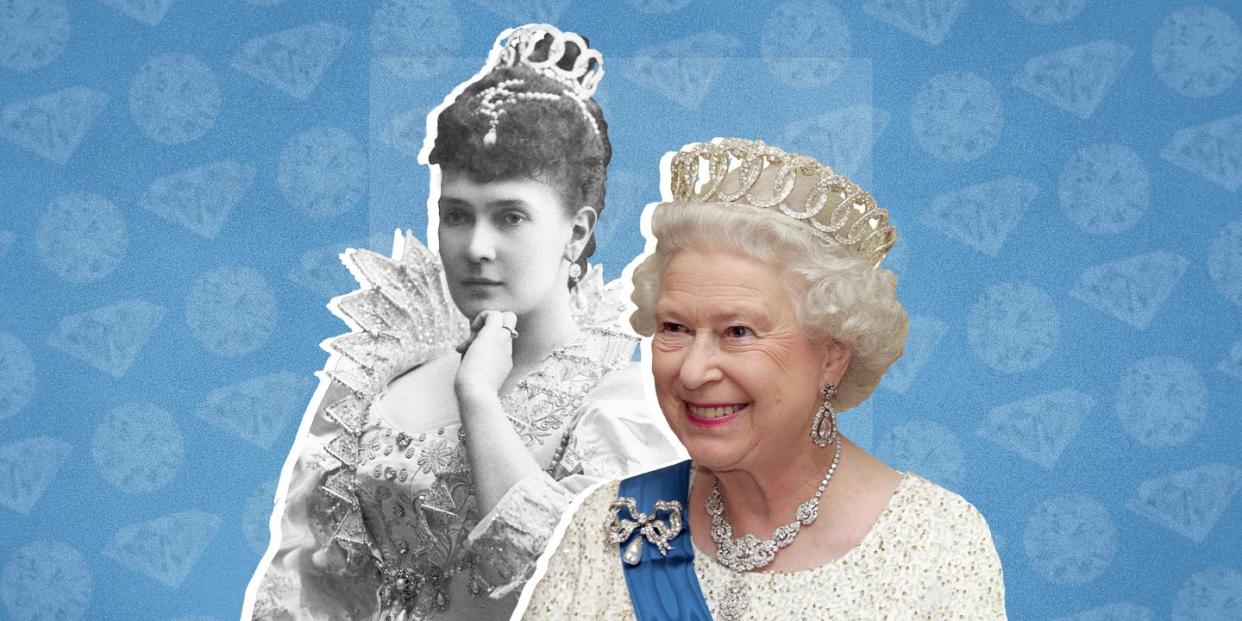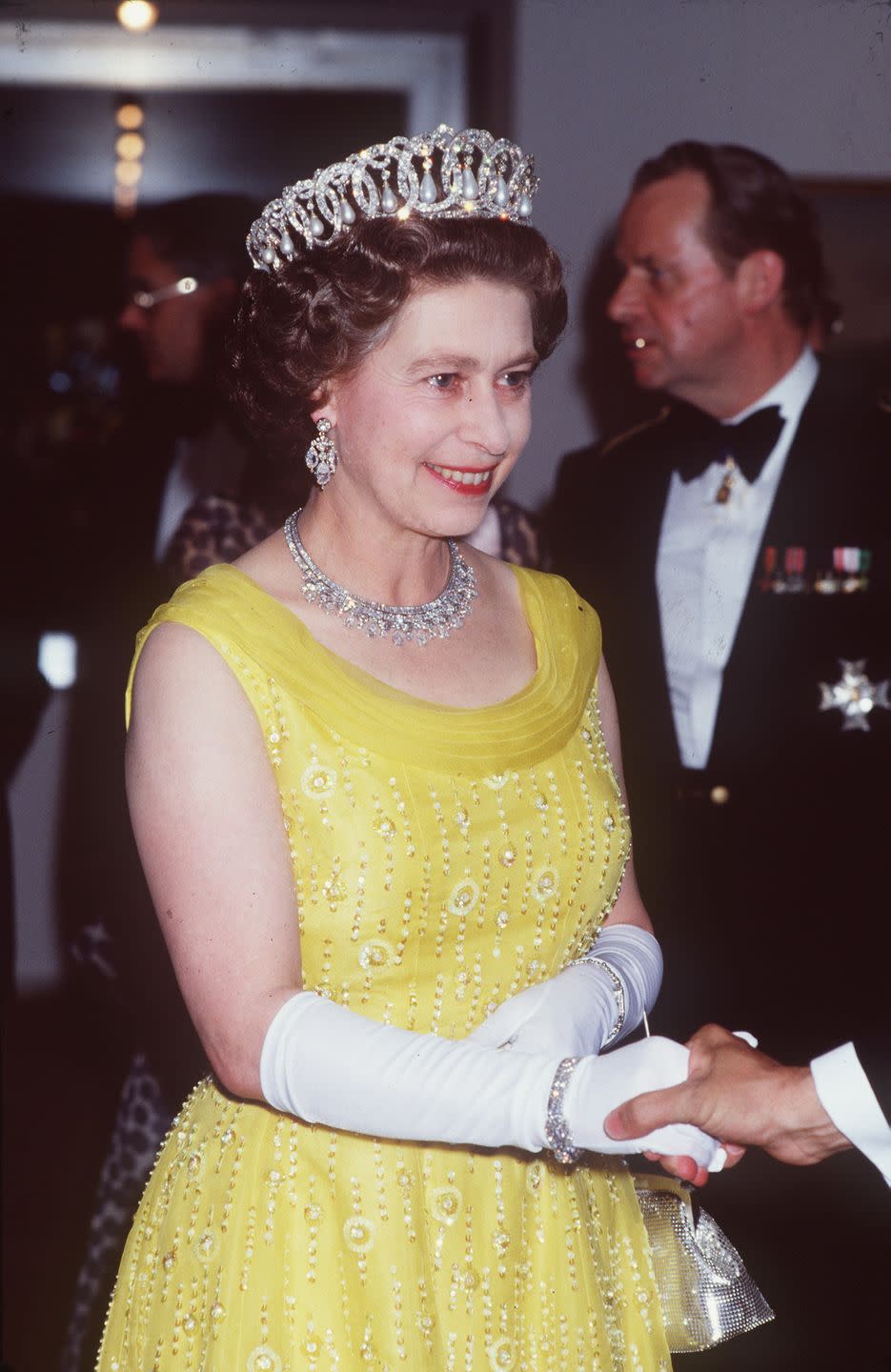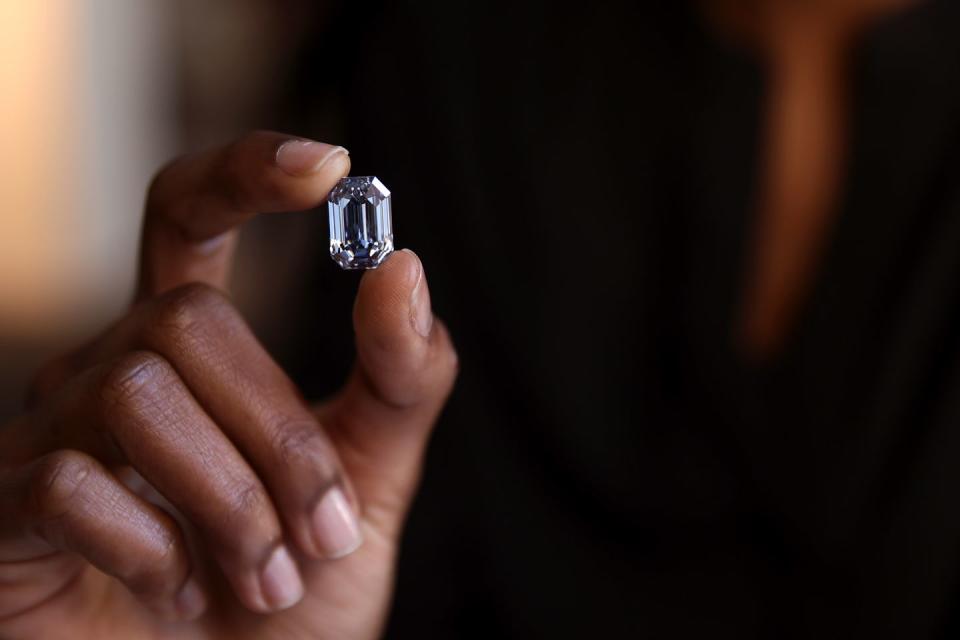Can Diamonds Really Make for a Good Insurance Policy?

- Oops!Something went wrong.Please try again later.
It has long been assumed that when times get tough, jewels are one of the few things you can stealthily take with you. After all, a diamond can hide in your pocket in a way a $100 million yacht most certainly cannot, as dozens of Russian oligarchs learned last year.
Historical precedent and early 20th-century jewelry lore back this assumption up: After Tsar Nicholas II and his family were executed in the summer of 1918, it was discovered that the young princesses had so many diamonds sewn into their underwear they were essentially bulletproof. Of the Romanovs (and their valuables) who did make it out, there is the legendary saga of Grand Duchess Maria Pavlovna, who stashed her gems in a secret compartment in her St. Petersburg palace and later had a British diplomat sneak in disguised as a worker (or, in other accounts, an old woman) to retrieve them. The Windsors have this 007-worthy op to thank for their Vladimir Tiara, which was one of Queen Elizabeth’s favorite crowns.

But what of the 21st century? Is it even possible for jewelry to slip under the radar anymore? The answer is complicated, though there is no doubting the utility of keeping highly portable diamonds as insurance. Just ask the anonymous buyers behind recent record-shattering sales. In October an 11.15-carat pink diamond fetched $49.9 million at Sotheby’s, six months after the house sold the largest blue diamond ever to appear at auction for more than $57 million. Both took place in Hong Kong. Coincidence?
“The fungibility of a $10 million pink diamond can be greater than that of a $10 million painting, which may not necessarily have a broad market,” says Lee White Galvis, an art lawyer and art services consultant. While people can’t really distinguish one 25-carat diamond from another, they will instantly recognize a Rembrandt, making it a lot harder to sell it discreetly. Even a high-profile stone can be slightly recut for a new identity.

But jewelry is far more than just a hard asset—it’s a family heirloom, too. At what point, then, does that sentimental gem also become an inconspicuous way to pass on family wealth—without leaving a paper trail? “Expensive jewelry is often not declared in someone’s estate,” says a prominent New York retailer with firsthand knowledge. “The heirs simply walk away with the assets on their fingers and wrists.” More often than not, he adds, nobody knows that your mother left millions of dollars’ worth of jewelry stored in lingerie drawers and boxes around the house.
How to ease the tax burdens of a proper diamond inheritance.
Appraise it: "The value of jewelry is subjective," says Russell Zelenetz, a partner at Stephen Russell. Have the pieces valued for estate tax purposes rather than for insurance, which may have a higher estimate.
Get technical: Giving jewelry to an heir while you're still alive, as opposed to bequeathing it, will result in very different tax implications. Better yet, consider a trust.
Or just sell: This option takes care of another problem that often arises when it comes to the family jewels: everyone fighting over who gets what.
Plus, when it comes to estate planning, many clients simply don’t discuss their gems, according to Parker F. Taylor, who focuses on tax law, wealth management, and trusts and estates as head of Hughes Hubbard’s Private Client Services group. “It’s a very personal asset class, and some don’t want to share what they have, even with family members,” he says.
Still, Grandma’s JAR and vintage Cartier are in the same category as art or real estate and therefore need to be valued accordingly. If someone leaves a multimillion-dollar estate without any reported jewelry on the tax return, it will raise a red flag. In other words, don’t try to outsmart the IRS. “If people don’t follow the law, there will be consequences and penalties,” Taylor says. “A good agent can dig around, make inquiries, and find out what’s going on.” That old Instagram photo of your nonna dripping in priceless ice? They will find it.
This story appears in the February 2023 issue of Town & Country. SUBSCRIBE NOW
You Might Also Like

